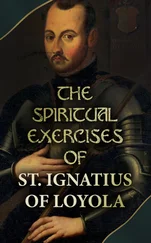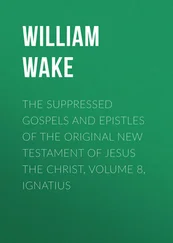Ignatius Donnelly - Antediluvian world
Здесь есть возможность читать онлайн «Ignatius Donnelly - Antediluvian world» весь текст электронной книги совершенно бесплатно (целиком полную версию без сокращений). В некоторых случаях можно слушать аудио, скачать через торрент в формате fb2 и присутствует краткое содержание. Жанр: Старинная литература, на русском языке. Описание произведения, (предисловие) а так же отзывы посетителей доступны на портале библиотеки ЛибКат.
- Название:Antediluvian world
- Автор:
- Жанр:
- Год:неизвестен
- ISBN:нет данных
- Рейтинг книги:5 / 5. Голосов: 1
-
Избранное:Добавить в избранное
- Отзывы:
-
Ваша оценка:
- 100
- 1
- 2
- 3
- 4
- 5
Antediluvian world: краткое содержание, описание и аннотация
Предлагаем к чтению аннотацию, описание, краткое содержание или предисловие (зависит от того, что написал сам автор книги «Antediluvian world»). Если вы не нашли необходимую информацию о книге — напишите в комментариях, мы постараемся отыскать её.
Antediluvian world — читать онлайн бесплатно полную книгу (весь текст) целиком
Ниже представлен текст книги, разбитый по страницам. Система сохранения места последней прочитанной страницы, позволяет с удобством читать онлайн бесплатно книгу «Antediluvian world», без необходимости каждый раз заново искать на чём Вы остановились. Поставьте закладку, и сможете в любой момент перейти на страницу, на которой закончили чтение.
Интервал:
Закладка:
“During the deafening din and confusion within the pickets of the village the figure discovered on the prairie continued to approach with a dignified step, and in a right line toward the village; all eyes were upon him, and he at length made his appearance within the pickets, and proceeded toward the centre of the village, where all the chiefs and braves stood ready to receive him, which they did in a cordial manner by shaking hands, recognizing him as an old acquaintance, and pronouncing his name, Nu-mohk-muck-a-nah (the first or only man). The body of this strange personage, which was chiefly naked, was painted with white clay, so as to resemble at a distance a white man. He enters the medicine lodge, and goes through certain mysterious ceremonies.
“During the whole of this day Nu-mohk-muck-a-nah (the first or only man) travelled through the village, stopping in front of each man’s lodge, and crying until the owner of the lodge came out and asked who he was, and what was the matter? To which he replied by narrating the sad catastrophe which had happened on the earth’s surface by the overflowing of the waters, saying that ‘he was the only person saved from the universal calamity; that he landed his big canoe on a high mountain in the west, where he now resides; that he has come to open the medicine lodge, which must needs receive a present of an edged tool from the owner of every wigwam, that it may be sacrificed to the water; for,’ he says, ‘if this is not done there will be another flood, and no one will be saved, as it was with such tools that the big canoe was made.’
“Having visited every lodge in the village during the day, and having received such a present from each as a hatchet, a knife, etc. (which is undoubtedly always prepared ready for the occasion), be places them in the medicine lodge; and, on the last day of the ceremony, they are thrown into a deep place in the river—’sacrificed to the Spirit of the Waters.”’
Among the sacred articles kept in the great medicine lodge are four sacks of water, called Eeh-teeh-ka, sewed together, each of them in the form of a tortoise lying on its back, with a bunch of eagle feathers attached to its tail. “These four tortoises,” they told me, “contained the waters from the four quarters of the world—that those waters had been contained therein ever since the settling down of the waters,” “I did not,” says Catlin, who knew nothing of an Atlantis theory, “think it best to advance anything against such a ridiculous belief.” Catlin tried to purchase one of these water-sacks, but could not obtain it for any price; he was told they were “a society property.”
He then describes a dance by twelve men around the ark: “They arrange themselves according to the four cardinal points; two are painted perfectly black, two are vermilion color, some were painted partially white. They dance a dance called Bel-lohck-na-pie,’” with horns on their heads, like those used in Europe as symbolical of Bel, or Baal.
Could anything be more evident than the connection of these ceremonies with the destruction of Atlantis? Here we have the image of the ark; here we have a white man coming with the news that “the waters had overflowed the land,” and that all the people were destroyed except himself; here we have the sacrifice to appease the spirit that caused the Flood, just as we find the Flood terminating, in the Hebrew, Chaldean, and Central American legends, with a sacrifice. Here, too, we have the image of the tortoise, which we find in other flood legends of the Indians, and which is a very natural symbol for an island. As one of our own poets has expressed it,
“Very fair and full of promise Lay the island of St. Thomas; Like a great green turtle slumbered On the sea which it encumbered.”
Here we have, too, the four quarters of Atlantis, divided by its four rivers, as we shall see a little farther on, represented in a dance, where the dancers arrange themselves according to the four cardinal points of the compass; the dancers are painted to represent the black and red races, while “the first and only man” represents the white race; and the name of the dance is a reminiscence of Baal, the ancient god of the races derived from Atlantis.
But this is not all. The Mandans were evidently of the race of Atlantis.
They have another singular legend, which we find in the account of Lewis and Clarke:
“Their belief in a future state is connected with this theory of their origin: The whole nation resided in one large village, underground, near a subterranean lake. A grape-vine extended its roots down to their habitation, and gave them a view of the light. Some of the most adventurous climbed up the vine, and were delighted with the sight of the earth, which they found covered with buffalo, and rich with every kind of fruit. Returning with the grapes they had gathered, their countrymen were so pleased with the taste of them that the whole nation resolved to leave their dull residence for the charms of the upper region. Men, women, and children ascended by means of the vine, but, when about half the nation had reached the surface of the earth, a corpulent woman, who was clambering up the vine, broke it with her weight, and closed upon herself and the rest of the nation the light of the sun.”
This curious tradition means that the present nation dwelt in a large settlement underground, that is, beyond the land, in the sea; the sea being represented by “the subterranean lake.” At one time the people had free intercourse between this “large village” and the American continent, and they founded extensive colonies on this continent; whereupon some mishap cut them off from the mother country. This explanation is confirmed by the fact that in the legends of the Iowa Indians, who were a branch of the Dakotas, or Sioux Indians, and relatives of the Mandans (according to Major James W. Lynd), “all the tribes of Indians were formerly one, and all dwelt together on an island, or at least across a large water toward the east or sunrise.
They crossed this water in skin canoes, or by swimming; but they know not how long they were in crossing, or whether the water was salt or fresh.” While the Dakotas, according to Major Lynd, who lived among them for nine years, possessed legends of “huge skiffs, in which the Dakotas of old floated for weeks, finally gaining dry land”—a reminiscence of ships and long sea-voyages.
The Mandans celebrated their great religious festival above described in the season when the willow is first in leaf, and a dove is mixed up in the ceremonies; and they further relate a legend that “the world was once a great tortoise, borne on the waters, and covered with earth, and that when one day, in digging the soil, a tribe of white men, who had made holes in the earth to a great depth digging for badgers, at length pierced the shell of the tortoise, it sank, and the water covering it drowned all men with the exception of one, who saved himself in a boat; and when the earth re-emerged, sent out a dove, who returned with a branch of willow in its beak.”
The holes dug to find badgers were a savage’s recollection of mining operations; and when the great disaster came, and the island sunk in the sea amid volcanic convulsions, doubtless men said it was due to the deep mines, which had opened the way to the central fires. But the recurrence of “white men” as the miners, and of a white man as “the last and only man,” and the presence of white blood in the veins of the people, all point to the same conclusion—that the Mandans were colonists from Atlantis.
And here I might add that Catlin found the following singular resemblances between the Mandan tongue and the Welsh:
--------------+------------+-------------+
| English. | Mandan. | Welsh. | Pronounced. |
Читать дальшеИнтервал:
Закладка:
Похожие книги на «Antediluvian world»
Представляем Вашему вниманию похожие книги на «Antediluvian world» списком для выбора. Мы отобрали схожую по названию и смыслу литературу в надежде предоставить читателям больше вариантов отыскать новые, интересные, ещё непрочитанные произведения.
Обсуждение, отзывы о книге «Antediluvian world» и просто собственные мнения читателей. Оставьте ваши комментарии, напишите, что Вы думаете о произведении, его смысле или главных героях. Укажите что конкретно понравилось, а что нет, и почему Вы так считаете.












